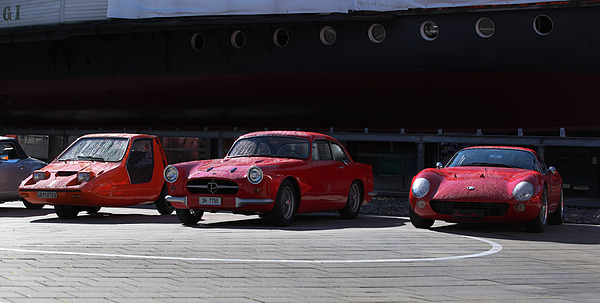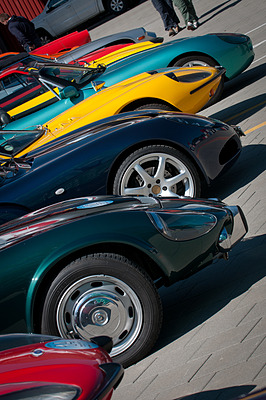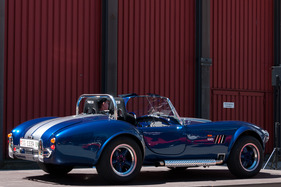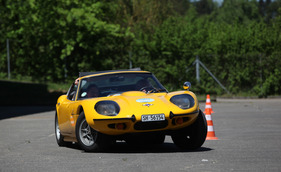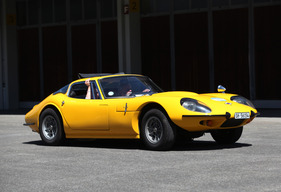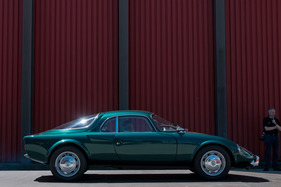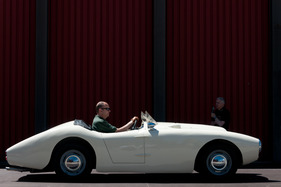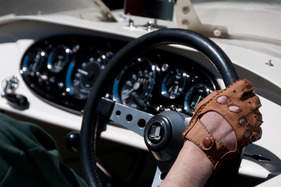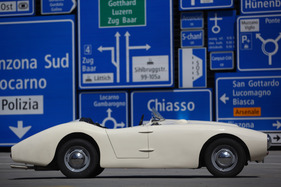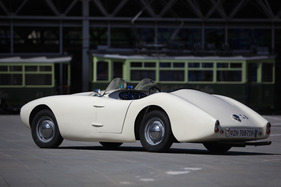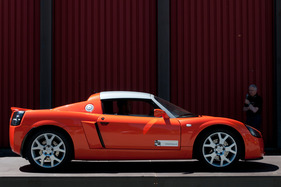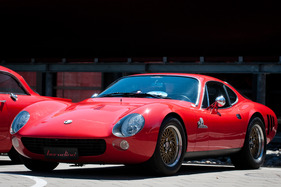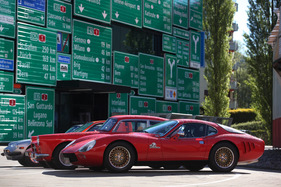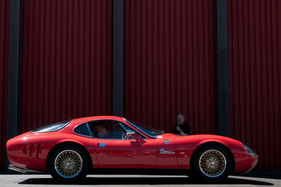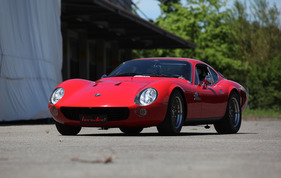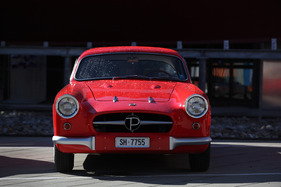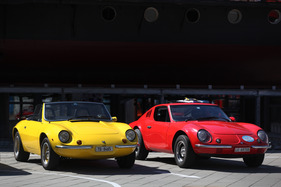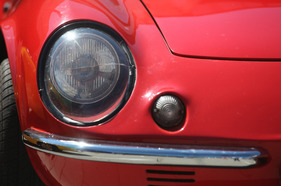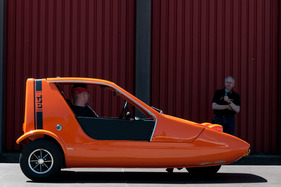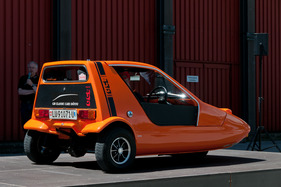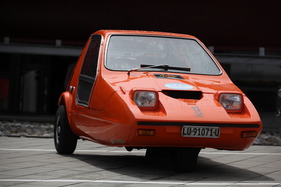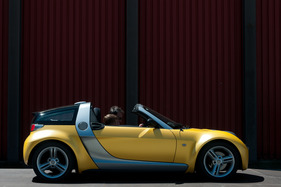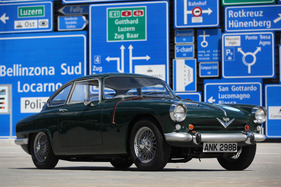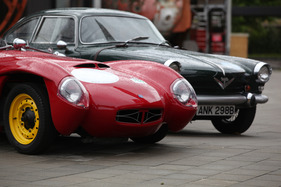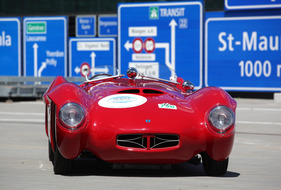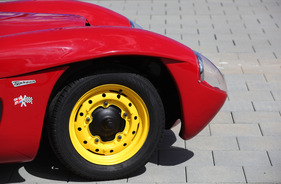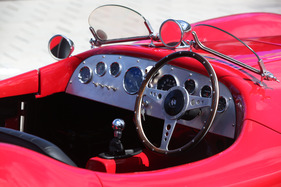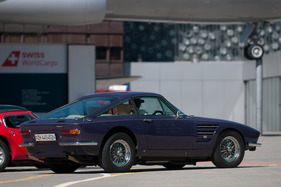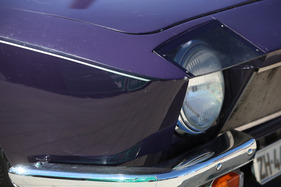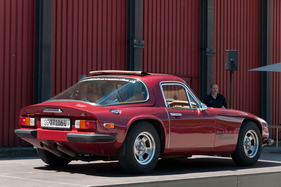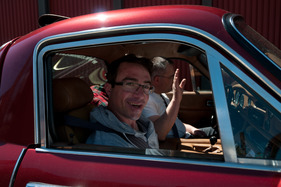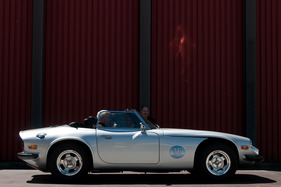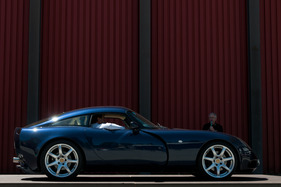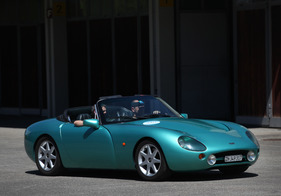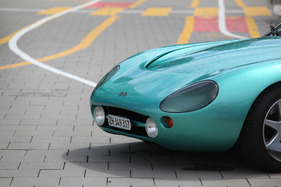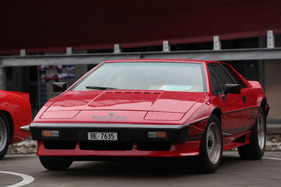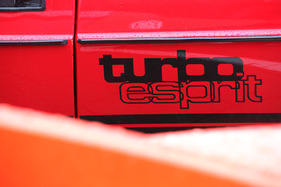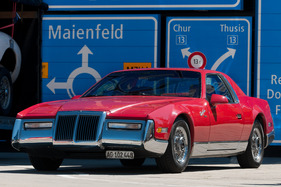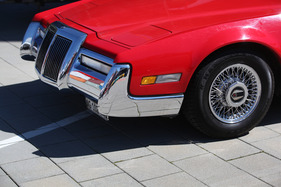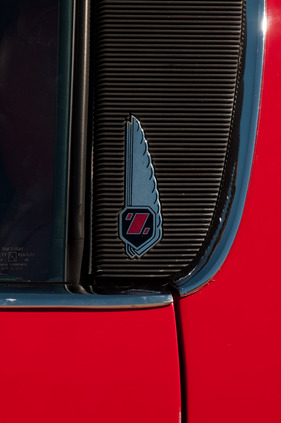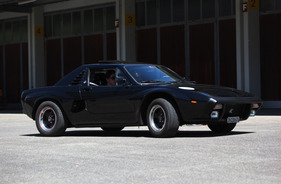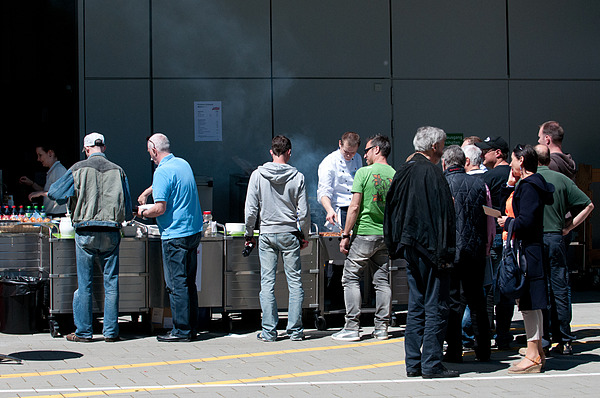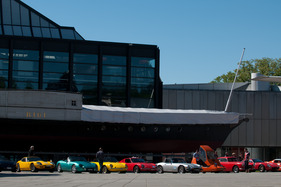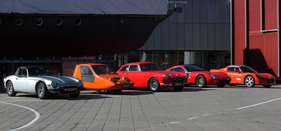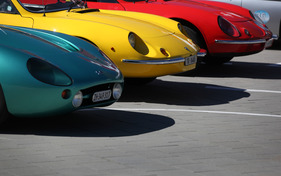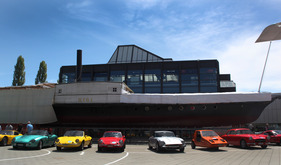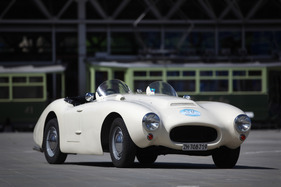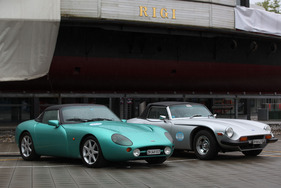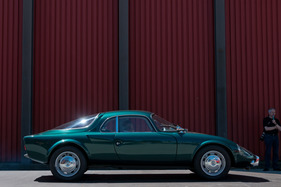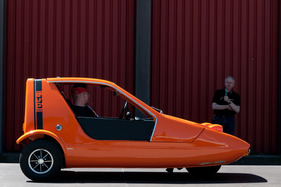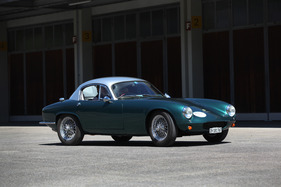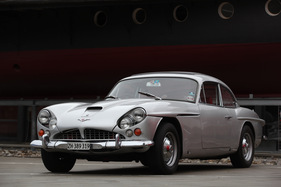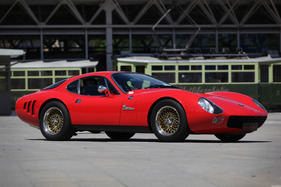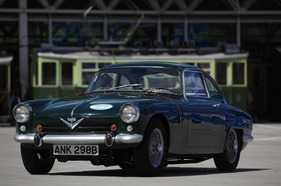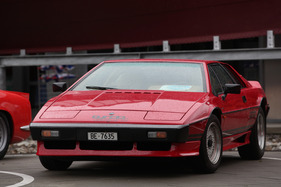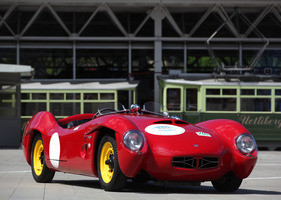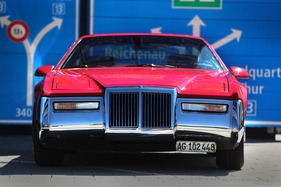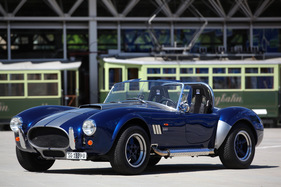Most of them started small, so the first "Fantastic Plastic" meeting can also be seen as a seed that can grow and flourish. Even with less than fifty cars represented, observers were impressed by the variety of colors, shapes and design approaches.
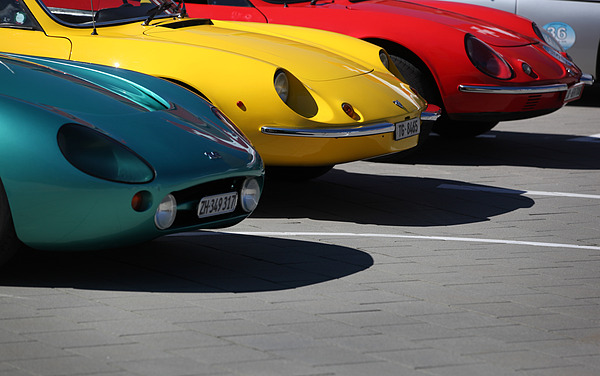
Common denominator - plastic for the car body
The unifying element of the "Fantastic Plastic" event, which was held for the first time on May 18 and 19, 2013, is plastic as a construction material. At the beginning of the 1950s, first small series manufacturers and then larger companies began to build car bodies from plastic, which was usually reinforced with glass fibers.
The advantage of this method was the low tooling costs. Instead of expensive pressing and punching equipment, which was necessary for the construction of sheet steel bodies, simple molds were sufficient in which polyester bodies could be produced in the smallest of spaces by hand lay-up or injection molding. In this way, small series were possible and nothing stood in the way of constant changes to shapes and designs.
These characteristics led to a great variety and to an entire industry that offered car bodies or kit vehicles. Plastic vehicles boomed in England in particular, but coupés and convertibles with plastic bodies were also produced in Germany, France, America and Brazil.
Around half of the vehicles on display at the Museum of Transport in Lucerne were of British origin, with the remainder from other countries.
Five decades of automobile construction
While the oldest vehicle on display dated back to 1954, the portfolio extended into the new millennium. Over 50 years of automotive engineering were represented, and the forms and solutions were correspondingly diverse.
For example, while the door hinges on the Microplas Toledo from 1954 were still on the outside and visible, they were elegantly concealed on the TVR Griffith 500, which was built almost 40 years later.
Front, middle and rear engines
In keeping with the many vehicle eras represented, the design principles also varied. From the front engine and standard drive (e.g. TVR 3000 Taimar, Peerless GT 2) to the mid-engine (e.g. Matra Djet VS, AC 3000 ME) to the rear engine (e.g. Puma GT/GTS, Smart), every conceivable solution for accommodating the engine could be found.
And there was even a tricycle, the Bond Bug 700 ES from Reliant. Like its older brothers, the Bond Bug carries the single wheel at the front, which, according to owner Georg Dönni, can lead to it tipping over if used carelessly.
Lightweight construction and luxury
Another reason for using plastic was to be able to produce components that were both lightweight and robust at the same time. The Lotus Elite, which Urban Fässler drove to Lucerne, proves this like no other vehicle. Colin Chapman had dispensed with a chassis for the Elite and inserted the suspension parts more or less directly into the closed plastic body. A subframe was only used at the front. This resulted in a vehicle weighing less than 600 kg, which, with the Climax engine, could also embarrass much larger opponents.
At the other end of the spectrum in Lucerne was a 1966 Jensen C-V8 Mk III, which showed that plastic was also used in luxury vehicles.
One-offs and series production
Plastic was also suitable for one-off items and prototype construction. Both could be seen in Lucerne. The Paulussen Beradino was built by Johannes Paulussen according to his own ideas. The designer started out in his father's carpentry workshop, and it was not until 40 years later that the work was completed. Paulussen only procured the chassis and engine from outside, developing and building the rest himself. In terms of design, he was guided by the Ferrari 275 GTB and the Ford GT 40, among other influences. The result was convincing, the observers agreed. Paulussen showed himself to be a perfectionist and nothing about the vehicle appears unfinished or prototype-like.
The second one-off also looks back on an exciting history. The Daimler SP 250 V8 Talisman from 1963 was an attempt to develop an alternative to the Jaguar E when it was announced that production of the Daimler SP 250 Dart was to be discontinued in favor of the E-Type. The body of the Tornado Talisman was placed on the chassis of the Daimler sports car with a 2.5-liter eight-cylinder engine. Although the wheelbase fitted, compromises had to be made in the interior. However, the result is impressive both in terms of sound and appearance.
Of course, the production models on display at the Museum of Transport were of a completely different nature. The BMW Z1 was just as much a part of this as the Opel Speedster or the Smart Roadster. However, the Chevrolet Corvette and Trabant P601L models on display at the Museum of Transport should also be included.
But more exotic vehicles such as the Puma GT/GTS, the Lotus Esprit S3 Turbo or the TVR 3000 350 C were also built in significant series.
Curves and exalted shapes
The plastics era was also a time of wild shapes. This began early on, as demonstrated by the Tornado Typhoon from 1958. A tubular trellis frame, Ford suspension and engine components were fitted with an opulent barchetta body and the sports car was finished, which above all looked fast, but did not hold back acoustically either.
The body of the Zimmer Quicksilver from 1988 was just as individual. Created on the technical basis of the Pontiac Fiero, the builders Bob and Paul Zimmer combined swanky American chrome elements with rounded shapes in the 36 examples of the Quicksilver.
Small engines and heavy V8 machines
The engine spectrum ranged from the small-stroke four-cylinder in the Bond Bug to the large V8 engine in the Jensen CV-8. In between, there were six-cylinder engines in V-shape and inline arrangement as well as four-cylinder engines of various designs. The sound impressions were correspondingly varied, ranging from the air-cooled VW Boxer sound to the pounding beat of the Rover V8.
The "secret" treasures of the Lucerne Museum of Transport
The "Fantastic Plastic" program included a short rally including an acceleration test and slalom runs, but also an exhibition run and plenty of downtime for petrolheads, as well as enough time to learn more about the museum.
One of the highlights of the weekend was certainly the guided tour of a normally inaccessible external warehouse of the Lucerne Museum of Transport.

This is where exhibits that are waiting to be used are stored. From model trains to complete airplanes, from trucks to ambulances, from bicycles with radial engines to Alvis cars with Graber bodies, everything can be discovered here, neatly stored and documented.
Vox Populi - the vote of the public
On Sunday, visitors to the Museum of Transport were invited to vote for the "hippest" (most unusual) plastic car.
The Pilgrim Cobra emerged as the winner of this public vote, generating enthusiasm and attention with its muffled, powerful V8 sound. Second place went to the Paulussen Beradino, with the Tornado Talisman V8 taking third place. Was it a coincidence that these three vehicles also boasted attractive soundscapes?
Development potential
The start has been made, the participants were satisfied and, above all, enthusiastic about the idea of holding a brand-independent meeting without any status or vehicle age limits.
For the next "Fantastic Plastic", we would like to see a few more cars in addition to the ones we saw this time, e.g. the Alpine A110 and A310, the Lotus Elan and Europa, the Enzmann 506, the Renault Espace, a VW Buggy, an Albar Sonic, the Borghi Les Diablerets Coupé, a Sbarro, a Sauter, the DKW Monza, to name just a few examples. Because the more vehicles you see in one place, the better you can see just how fantastic the world of plastic cars really is and was. Therefore - here's to another one!
List of the vehicles present
The following list shows all the cars that were present at the "Fantastic Plastic" event. The vehicles marked with "VHS" come from the collection of the Swiss Museum of Transport Lucerne. The table can be sorted by clicking on the column headings.
| Make | Type | Year | Year Comment |
|---|---|---|---|
| AC | 3000 ME | 1981 | |
| BMW | Z1 | 1991 | |
| Brabus | Smart Roadster | 2004 | |
| Chevrolet | Corvette Stingray | 1966 | VHS |
| Dyane | Capri | 1980 | VHS |
| Ginetta | G33 | 1992 | |
| Gnome | 1986 | VHS | |
| Horlacher | Egg | 1988 | VHS |
| Itera | Plastic bike | 1980 | VHS |
| Jensen | CV8 Mk III | 1966 | |
| Kougar | Monza | 1975 | |
| Lotus | Elite | 1959 | |
| Lotus | Esprit Turbo | 1982 | |
| Lotus | Elise Mk 2 | 2001 | |
| Marcos | GT 3L | 1970 | |
| Marcos | GT 3L | 1971 | |
| Matra | Djet VS | 1966 | |
| Microplas | Toledo | 1954 | |
| Opel | Speedster Turbo | 2006 | |
| PacCar | 1986 | VHS | |
| Paulussen | Beradino | 1975 | |
| Peerless | GT2 | 1959 | |
| Pilgrim | AC Cobra V8 | 1971 | |
| Puma | GT | 1972 | |
| Puma | VW | 1978 | |
| Reliant | Bond Bug 700 ES | 1972 | |
| Selec | Tiny | 1993 | VHS |
| Sinclair | C5 | 1986 | VHS |
| Smart | Roadster Coupé | 2003 | |
| Solar technology | F. Plattner | 1986 | |
| Tornado | Typhoon | 1958 | |
| Tornado | Talisman V8 | 1963 | |
| Trabant | P601L | 1970 | VHS |
| Trident | Clipper | 1969 | |
| TVR | 3000 Taimar | 1978 | |
| TVR | 3000 S | 1978 | |
| TVR | Griffith 500 | 1993 | |
| TVR | Chimera | 1997 | |
| TVR | Chimera | 1998 | |
| TVR | Chimera | 2000 | |
| TVR | 350 C | 2005 | |
| TVR | Tuscan | 2005 | |
| Twike | Prototype for Expo | 1986 | VHS |
| Velorex | Oscar 16 | 1962 | VHS |
| Zagato | Zele 1000 | 1973 | |
| Room | Quicksilver | 1988 |








